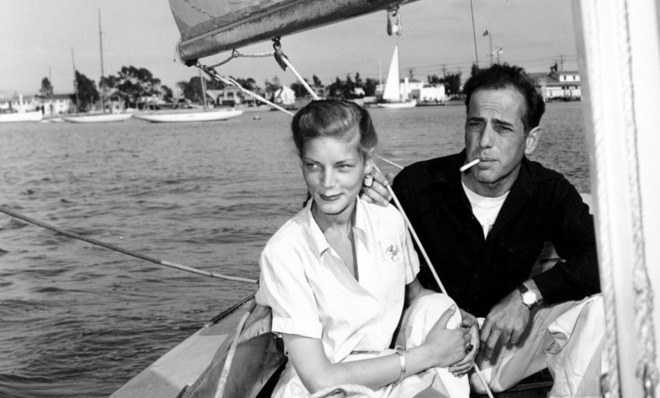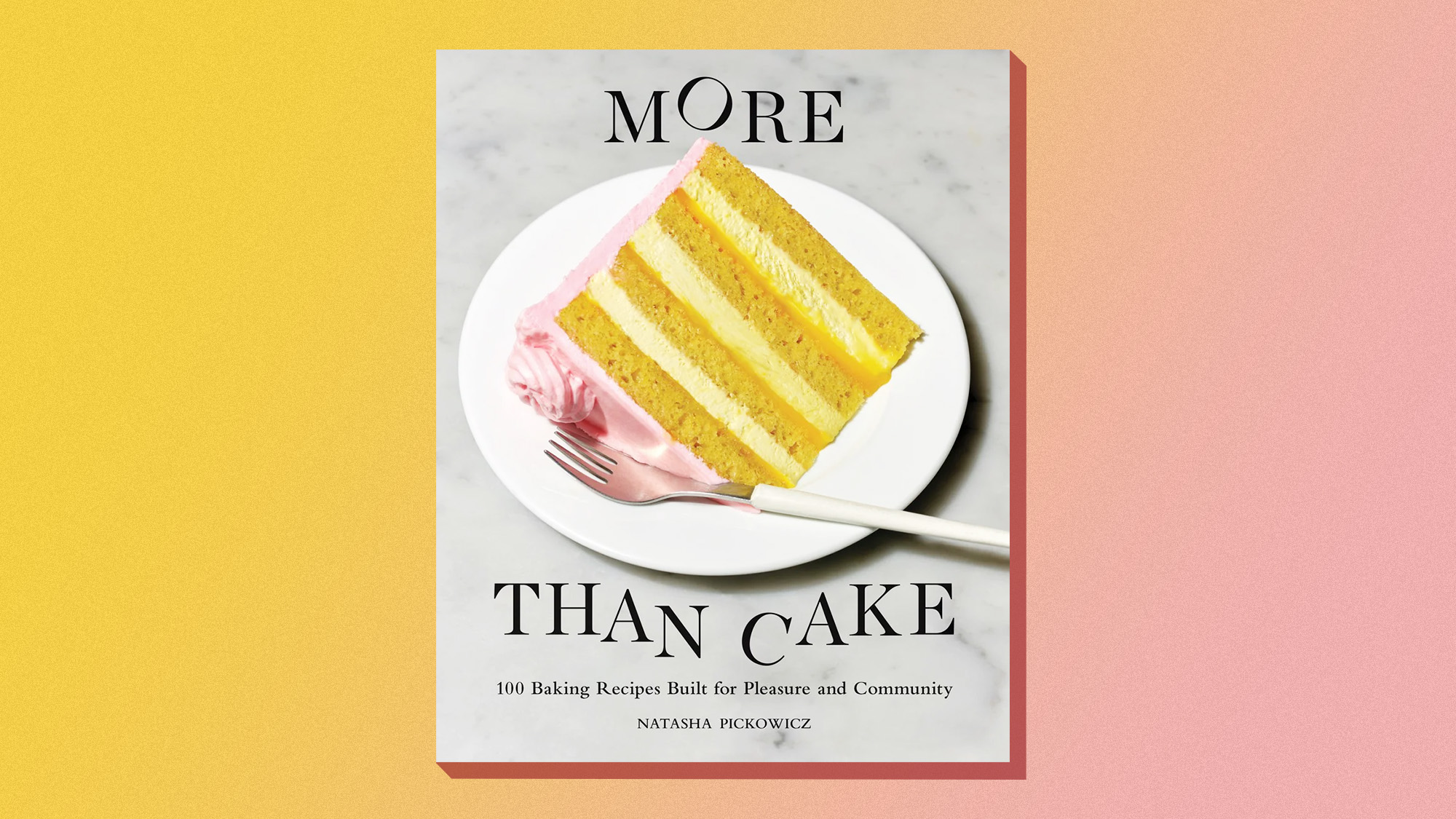Lauren Bacall's remarkably honest account of Humphrey Bogart's death
The actress, who died Tuesday at 89, offered a powerful and uniquely candid portrait of her life in her autobiography By Myself

When you make a purchase through links on our site, we may earn a commission
More than 35 years before her death at 89, Lauren Bacall published her first autobiography, By Myself, in which she reminisced about her storied Hollywood career, her romantic relationships, and her three children. That includes, of course, the story of her relationship with To Have and to Have Not co-star Humphrey Bogart, who eventually became her first husband.
Bacall once famously said, "The only thing that I am not pleased about is when people only talk about 'Bogie' to me as though I had no other life at all." And you can see why — her career was multilayered, and she knew great success in Hollywood and on Broadway without her husband's involvement. But it's also true that Bacall's romance with Bogart wasn't the Hollywood story people generally imagine — and her account of the real version gives a strong impression of her indomitable courage and honesty.
The Week
Escape your echo chamber. Get the facts behind the news, plus analysis from multiple perspectives.

Sign up for The Week's Free Newsletters
From our morning news briefing to a weekly Good News Newsletter, get the best of The Week delivered directly to your inbox.
From our morning news briefing to a weekly Good News Newsletter, get the best of The Week delivered directly to your inbox.
You probably have an idea of what Humphrey Bogart was like. To this day, his carefully constructed persona is perpetuated in films, promotional material, publicity, and commentary: an active, commanding, confident, cynical, and sexually compelling (albeit aloof) tough guy. But Bacall challenges this "tough guy" representation in her autobiography, offering a graphic account of both their courtship and her husband’s illness. Her reflections allow a glimpse into Bogart's full humanity — and hers.
In her memoir, Bacall recalls her connection with Bogart as "the headiest romance imaginable." Throughout their courtship, Bacall describes Bogart as shy, gentle, vulnerable, and open, confiding in her about his three failed marriages. During their small wedding in Ohio, "tears streamed down [Bogart's] face." According to Bacall, this outburst of emotion was Bogart's reaction to hearing the words of the wedding ceremony and finally "realizing what they meant — what they should mean."
It was more than a decade (and several co-starred films) later that Bogart's health began to decline. As Bacall tells it, her husband reluctantly visited the internist of fellow screen star Greer Garson in February of 1956. Bogart's cough, no doubt from years and years of smoking, sounded worse than usual, and "sometimes his throat burned when he drank orange juice."
An initial sputum test revealed an inflamed esophagus, and a couple of weeks later, a bronchoscopy and another sputum test revealed irregular, malignant cells in Bogart's esophageal tissue. The star would require surgery immediately, and his current production schedule would have to be postponed while he recuperated. Unfortunately, Bogart would never recover. Almost a year later, on January 15, 1957, Humphrey Bogart died of throat cancer at the age of 58.
A free daily email with the biggest news stories of the day – and the best features from TheWeek.com
From the beginning of Bacall's account of her husband’s illness, the reader is asked to pay special attention to Bogart's physical body — an unexpected move that dispels the aura of one of Hollywood's biggest stars. Scholar Richard Dyer has talked at length about how a star's body provides the "raw material" from which his or her image is ultimately fashioned: Marilyn Monroe's body represents sexuality, Paul Robeson's "the nobility of the black race," and Judy Garland's "her problems and defiance of them."
We might add to this list Humphrey Bogart's body, which symbolizes toughness and a hardened masculinity. As scholar Virginia Wright Wexman wrote, Bogart's swarthy complexion, heavy facial features, wiry build, and "harsh, nasally voice" made him an ideal choice for all of the tough-guy roles he played.
But Bacall describes Bogart otherwise. As she recalls, his surgeons planned to "remove his esophagus and shift the stomach around so they could attach it to the tab that was left." When this procedure was explained to her in full, the young wife and mother of two had no idea that her husband's surgery would last nine and a half hours.
"How could a body take that much?" she asks. "Poor baby — all those tubes, those bottles — what was the body under the blanket like?" Bacall recalls that her husband's arm and hand were "swollen to four times their normal size" and a "terrible black thing [was placed] in his mouth to keep him from swallowing his tongue." As she observed him, "he looked so unlike Bogie — still mercifully unconscious… enclosed in another world, protected not by me, but by those raised bedsides, with those bottles and tubes sustaining life."
Her description does something that virtually no other media texts do: positions Bogart as fragile and vulnerable.
Bacall goes on to reminisce about all the friends and family who stopped by during that dreadful year, which she claimed at age 80, "will be with [her] for the rest of [her] life."
Before Bogart’s illness, people frequently visited and phoned the Bogart-Bacall household. But after nitrogen mustard treatments significantly weakened the star, Bacall "made some ground rules" and began to monitor guests, slowing down the traffic considerably.
Consequently, those who had not seen Bogart in a while were utterly shocked at the star's physical appearance when they were allowed to visit him. One friend, Bacall says, "gasped" when she entered the room. "She couldn't help it," the author apologizes to the reader; "she was so shocked at the sight of that figure in the bed."
During a later visit by producer Sam Goldwyn and director William Wyler, Bogart called the nurse for a shot of morphine, "pulled up one pajama leg [and exposed] his pathetic frail limb." Goldwyn, the author reports, was "stunned to see the thinness of that leg… he slowly turned away."
Bacall did not have to be so candid about this particular part of her life. Fellow stars like Katharine Hepburn and June Allyson also dealt with illnesses of their significant others, Spencer Tracy and Dick Powell. But their autobiographies reduce these events to a couple of pages, and virtually no details are disclosed. As such, the star images of Tracy and Powell remain mostly intact.
But Bacall does give us this information. Why? Perhaps she wanted the reader to see Bogart as she did: a man with "so many, many layers that, as well as I knew him, I'm sure I never uncovered them all." Bacall's decision to publish the grim, painful details about this portion of her life was both wise and brave. For those who know the real story, Bogart and Bacall's romance isn't just one of Hollywood's most legendary — it's one of Hollywood's most human.
[Editor's note: this story was adapted from a longer blog post.]
Kelli Marshall teaches courses on Seinfeld, stand-up comedy, film musicals, Spike Lee, and other fun stuff at DePaul University. Read more about her take on the media and her experiences in higher ed at kellimarshall.net.
-
 Education: More Americans say college isn’t worth it
Education: More Americans say college isn’t worth itfeature College is costly and job prospects are vanishing
-
 One great cookbook: ‘More Than Cake’
One great cookbook: ‘More Than Cake’the week recommends The power of pastry brought to inspired life
-
 Democrat files to impeach RFK Jr.
Democrat files to impeach RFK Jr.Speed Read Rep. Haley Stevens filed articles of impeachment against Health and Human Services Secretary Robert F. Kennedy Jr.